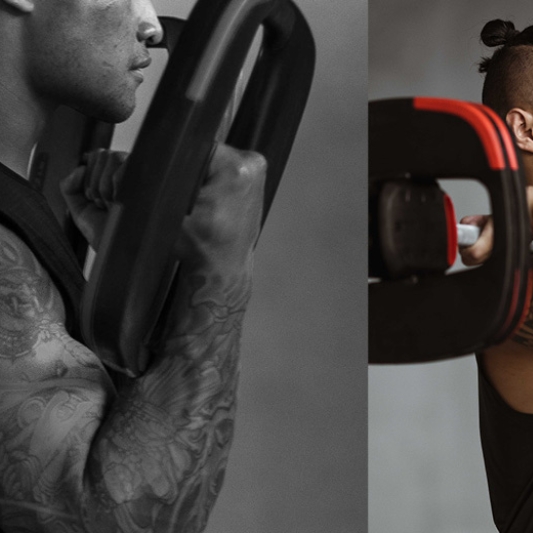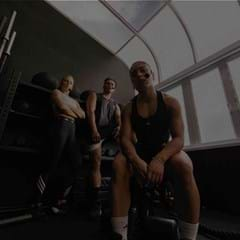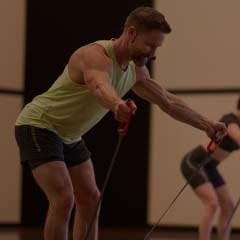Did you know that Gen Z and Millennials – known collectively as ‘Generation Active’ for their love of workouts – now account for over 80% of the total fitness market? That means that if we want to keep packing out our classes for the long run, we need to ensure we’re providing a workout that attracts this generation into our studios.
Strength training is back in a big way, with a recent MindBody report declaring it the most popular fitness genre of 2022. Again, Gen Z are driving this trend, with strength training identified as their favorite way to work-out, followed by cardio and yoga/Pilates. And for a generation that grew up on social media and have a passion for inclusivity, it’s no surprise hashtags like #girlswholift are inspiring growing numbers of young women to take up strength training.
Enter LES MILLS Strength Development (SD) – a brand new workout from the "Les Mills Lab" that's taken New Zealand clubs by storm. It sits outside of the “normal” release cycle as a stand-alone series of 12 workouts. Originally trialed in Les Mills New Zealand clubs, SD proved so popular that it’s now launching worldwide.
“At peak times it’s pulled 50 to 60 people" says Tash Vincent, Group Fitness Manager at Les Mills Auckland City. "Even off-peak times like mid-morning have still gotten 20 to 30 people, which is amazing. Every time we take the 12-week cycle off the timetable the members have been upset because they want it to stay! We’ve seen lots of new people in classes who wouldn’t normally do group fitness."
Crafted by experts
“It's the plethora of expertise that makes this program so amazing,” says choreographer Erin Maw. “At its inception, it was shaped by Glen Ostergaard – BODYPUMP™ Program Director and all-round strength and group fitness guru, and John Nicodemus – a strength and conditioning coach who specializes in Olympic lifting. Rob Lee, a physio and technical consultant with a strong strength and conditioning background, was involved from early on, as was Ben Main.”
So, what’s the difference between SD and BODYPUMP? Whereas in BODYPUMP we use light to moderate weights to perform high reps, SD focuses on lifting heavier weights for slower tempos to generate hypertrophy. Auckland-based Coach Bree McElroy explains: “The biggest difference is that we ask you to move slow… really slow. Most of the programs that I teach find intensity by increasing speed or power. In SD we encourage intensity through repetitive loading of a heavy weight.
"We start off with our “base weight” which we describe as the weight you would typically use in LES MILLS GRIT Strength™ or in the Back Track of BODYPUMP. Once we have a good understanding of the movement patterns, we progressively add load until we reach “max weight”. In the first SD workout, Track 3 focuses on our front and back squats and we have three opportunities to increase the weight on our bar. If we start with our BODYPUMP Back Track weight and increase the load x3, you get a rough idea of how different the weight selection is in SD!”
The workout is executed off the beat – allowing participants more autonomy in their movements. “I love teaching SD because it allows us to focus on mind-muscle connection,” says another SD Coach, Gary Mulholland. “We slow down the movements and focus on squeezing and activating the muscles, creating a flow that's almost meditative. The slower reps allow everyone to find the time under tension that works best for their body.”

Faster certification
In contrast to traditional programs, you could be certified and teaching SD within a week! “The certification process is split into 3 stages – pre-work, day training and post-work,” says Bree. “In the pre-work stage, you’re given a bunch of resources to review and you’ll be asked to film and send in your class setup, neutral spine and warm up. This gives your Trainer a good idea of where everyone is at, but no feedback is given at this stage.
“In the live or online one-day training, we explore each of the key skills needed to be a successful SD Coach, with a specific focus on the workout plan, technique and coaching. This also involves a technique session to help you get familiar with the movement patterns we’ll see over the 12 releases.
“For the post-work, you’ll be asked to review some of the extra material in your Coach Handbook (focusing on Connection and Performance) and then film and submit your class intro, neutral spine, warm up AND Track 2 of SD Release 1. Following this, the Trainer will review your submissions, give you a pass or re-submit grade and provide you with feedback on the 5 Key Elements.”
When you certify as a SD Coach, you’ll receive a full set of releases to learn and teach across 12 weeks. “You need to teach them in order because they’ve been carefully designed to build strength in phases, based on strength and conditioning science,” says Erin. “Members can, and should, repeat the workouts a few times. Just make sure you teach the workouts in the correct order and they will safely and effectively maximize the gains.”
Easy to learn
If learning 12 releases sounds daunting, you can rest assured that the choreography is less complex than other programs. “It takes me 10 to 15 minutes to learn a release,” says Des Helu. “I find it easy because I'm also a personal trainer, and the structure of SD is very like that I’d create for my clients. You can also teach the same release for 2 weeks running if you need more time to learn.”
“The programming is beautifully simple, logical, and intuitive,” adds Gary. “I find it easy and enjoyable to learn, and it's fun to see improvements in my own strength. Overall, it’s significantly improved both my leg strength and my upper body strength in some of those trickier ranges. I love that I get to sneak in a few extra heavy squats, lunges and Bulgarians into my weekly volume. In the weights room I’m pretty consistent, but this can mean I'm repeatedly hitting movements that cause my results to plateau. SD helps build strength in all those funny little angles that I’ve forgotten about.”
Tash says: “I also teach the program and I love the fact that it’s not a busy workout. There’s lots of space to allow you to coach the movements in more depth and explain how they should feel. It’s actually my favorite class to teach right now. As much as I love BODYCOMBAT™ and GRIT, they’re pretty taxing. SD feels like giving back to my body. You get to do the whole workout, although you can floor coach if you want to. It’s cool to see the progression for the members too. A lot of them tell me they feel more confident now when they do BODYPUMP or GRIT because they’ve improved their form.”
Powered by science
SD is grounded in exercise science to ensure each workout is safe and delivers the results the next generation of members are looking for. A 12-week study carried out with the Auckland University of Technology (AUT) saw SD participants increase their one-rep-max (1RM) by an average of 15% for deadlift, 9% for squat, and 7% for bench press. Participants also reported a 22% confidence boost in their ability to perform the key lifts.
Likewise, SD has been refined to ensure it delivers maximum impact for operators through extensive global trials spanning Les Mills New Zealand clubs and Village Gyms across the UK.
The 12-week Village Gyms pilot found:
- 95% of participants would continue attending Strength Development classes
- 96% of participants would recommend Strength Development to someone else
- 98% of participants were satisfied with the quality of Instruction they received
- 100% of Instructors were likely to continue teaching Strength Development
Still wondering if it's for you? "If empowering your participants to gain confidence and long-term health benefits from movement is something you're passionate about, you should definitely teach Strength Development," says Bree. "The music is sick, the workout is incredible, the benefits are amazing and the appetite for a program like SD is huge at the moment. This is the program to get around!"
We’re excited to bring LES MILLS Strength Development to our global community, so stay tuned to find out how you can get certified in your region. Learn more about why progressive strength training is a trend worth exploring here.








